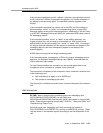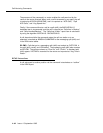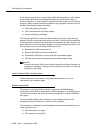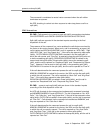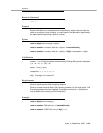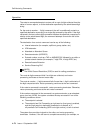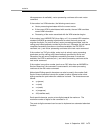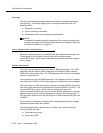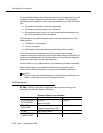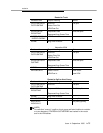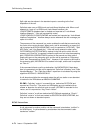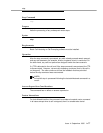
Call Vectoring Commands
A-70 Issue 4 September 1995
Operation
The
route-to
command attempts to route a call to a set of digits collected from the
caller or from an adjunct, or to the destination specified by the administered digit
string.
For the route-to number ... if digit command, the call is conditionally routed to a
specified destination according to a single digit entered by the caller. If the digit
collected in the last
collect digits
command matches the specified comparison in
relation to the administered digit, the command attempts to route the call to the
specified destination.
The destination for a route-to command can be any of the following:
■ Internal extension (for example, split/hunt group, station, etc.)
■ VDN extension
■ Attendant or Attendant Queue
■ Remote extension (UDP/DCS)
■ External number, such as a TAC or AAR/ARS FAC followed by a public or
private network number (for example, 7-digit ETN, 10-digit DDD, etc.)
■ Remote Access Extension
■ Service Observing FAC
NOTE:
The VDN’s Class of Restriction (COR) is used for calling permissions.
The
route-to digits
command fails if no digits are collected, and vector
processing continues at the next vector step.
The
route-to number ... if digit
command fails if more than 1 digit is collected or if
the digit comparison fails. Vector processing continues at the next command.
If the
route-to
command is successful, vector processing terminates. Otherwise,
vector processing continues at the next vector command.
If the number expressed in the command is a system extension or an attendant
group (and not a VDN), the system considers the step successful if one of the
following conditions occurs:
■ The endpoint is alerted.
■ The endpoint has Call Forwarding or night service (hunt group) enabled,
and the (night service) destination forwarded to is alerted; or, if
off-premises Call Forwarding (UDP hunt night service), a trunk is seized.
The system then provides ringback to the caller, and vector processing
terminates. However, if the call cannot complete successfully (for example, no




